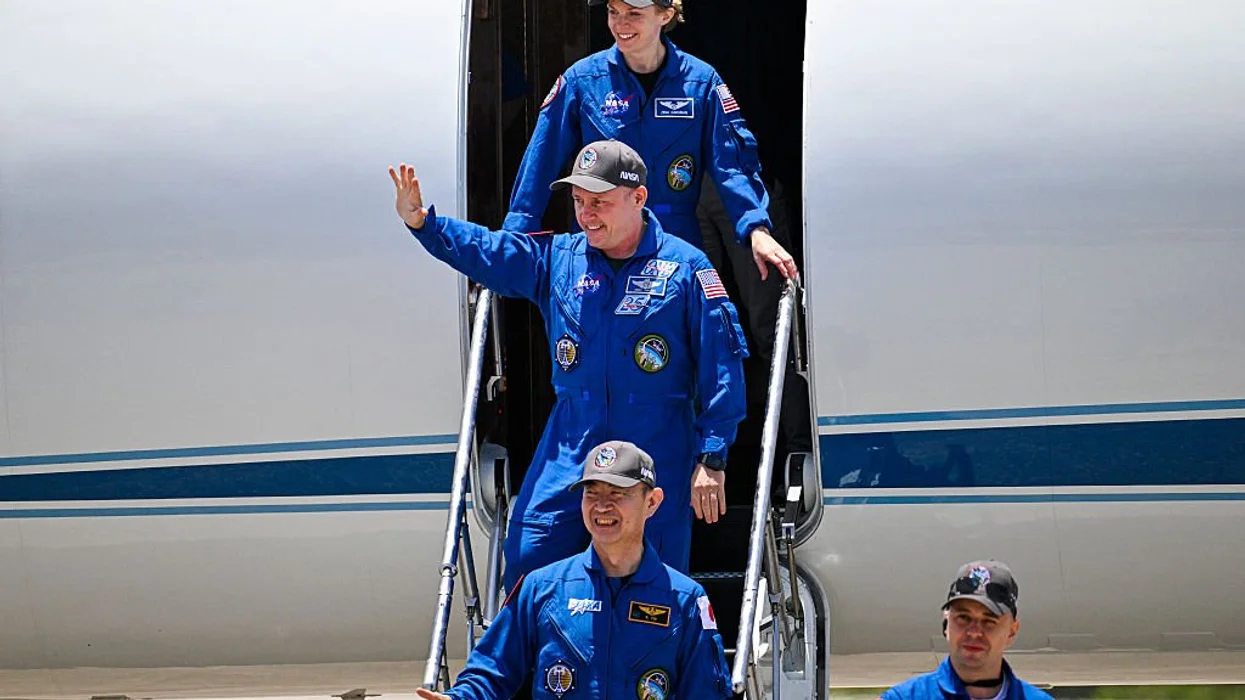Two years ago, Earth had a close call with a solar storm that would have severely disrupted daily life, but most people are just finding out about it now.
The solar storm in July 2012, if it hit Earth, would have had such an impact on life that Daniel Baker with the University of Colorado told NASA's Science News "we would still be picking up the pieces."
 Strong coronal mass ejections that took place in July 2012 missed Earth but were recorded by a spacecraft in orbit. Information from this hit has scientists saying the potential for a storm like this to actually hit Earth and drastically impact our technology is "sobering." (Image source: YouTube)
Strong coronal mass ejections that took place in July 2012 missed Earth but were recorded by a spacecraft in orbit. Information from this hit has scientists saying the potential for a storm like this to actually hit Earth and drastically impact our technology is "sobering." (Image source: YouTube)
Baker, NASA employees and colleagues at other universities described the storm, which they say might have been one of the strongest in recorded history, and how it could have debilitated life on Earth:
Extreme solar storms pose a threat to all forms of high-technology. They begin with an explosion--a "solar flare"—in the magnetic canopy of a sunspot. X-rays and extreme UV radiation reach Earth at light speed, ionizing the upper layers of our atmosphere; side-effects of this "solar EMP" include radio blackouts and GPS navigation errors. Minutes to hours later, the energetic particles arrive. Moving only slightly slower than light itself, electrons and protons accelerated by the blast can electrify satellites and damage their electronics. Then come the CMEs, billion-ton clouds of magnetized plasma that take a day or more to cross the Sun-Earth divide. Analysts believe that a direct hit by an extreme CME such as the one that missed Earth in July 2012 could cause widespread power blackouts, disabling everything that plugs into a wall socket. Most people wouldn't even be able to flush their toilet because urban water supplies largely rely on electric pumps.
The National Academy of Sciences estimated that an extreme solar storm could cost up to $2 trillion in damages, which is 20 times more than the cost of Hurricane Katrina, not to mention that some infrastructure could take years to repair.
"I have come away from our recent studies more convinced than ever that Earth and its inhabitants were incredibly fortunate that the 2012 eruption happened when it did," Baker told NASA. "If the eruption had occurred only one week earlier, Earth would have been in the line of fire.
And while it didn't hit Earth, something else was in its way instead: the STEREO-A spacecraft. It was actually lucky that the storm hit the spacecraft, because it was equipped with instruments to measure various factors and provide scientists with the data they needed to best analyze the event.
"Spacecraft such as the STEREO twins and the Solar and Heliospheric Observatory (a joint ESA/NASA mission) were designed to operate in the environment outside the Earth's magnetosphere, and that includes even quite intense, CME-related shocks," Joe Gurman, a scientist on the STEREO project, told NASA about the spacecraft's ability to survive such a hit. "To my knowledge, nothing serious happened to the spacecraft."
"Without the kind of coverage afforded by the STEREO mission, we as a society might have been blissfully ignorant of this remarkable solar storm," Baker added. "How many others of this scale have just happened to miss Earth and our space detection systems? This is a pressing question that needs answers."
In a paper published earlier this year, physicist Pete Riley with Predictive Science Inc. found the probability of an extreme solar storm hitting Earth within the next 10 years: 12 percent.
Although that percentage might seem low, Riley told NASA that it's actually "a sobering figure."
Watch this video about this "Carrington-class" solar storm:
The consequences of such a storm are so great that there's a push for people to prepare now.
Reuters columnist John Kemp wrote that it is "essential that the power industry and policymakers better understand how [an extreme solar storm] would impact vulnerable systems (including the grid, global positioning system, radio and television communications, satellites and aircraft), harden them where possible, and plan how to cope with the aftermath of a big storm."
"Once a large flare is detected, the industry and policymakers would have just an hour or so to put the grid and other systems into the safest possible operating mode before the storm arrives," he added.
Kemp emphasized the need for power companies to ready the grid in such a way that they could reduce load on critical transformers before such a storm occurred and prepare a plan of action to fix any damages afterward as quickly as possible.
"We cannot stop a big solar storm arriving, but we can prepare and try to avoid its worst effects," Kemp wrote.
(H/T: Daily Mail)

 Strong coronal mass ejections that took place in July 2012 missed Earth but were recorded by a spacecraft in orbit. Information from this hit has scientists saying the potential for a storm like this to actually hit Earth and drastically impact our
Strong coronal mass ejections that took place in July 2012 missed Earth but were recorded by a spacecraft in orbit. Information from this hit has scientists saying the potential for a storm like this to actually hit Earth and drastically impact our 




